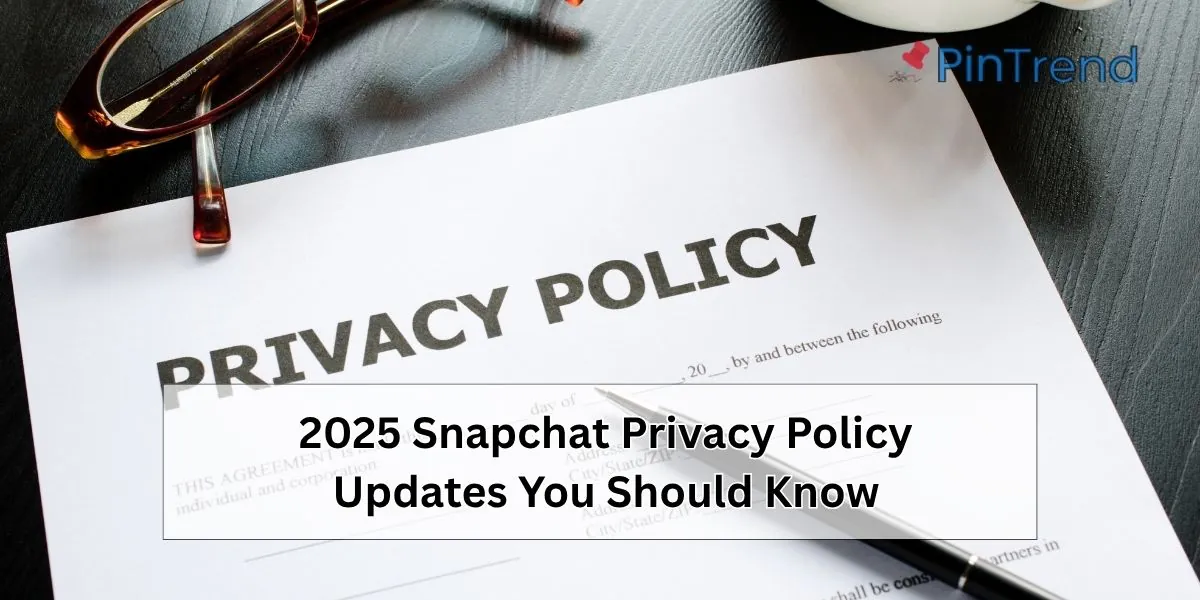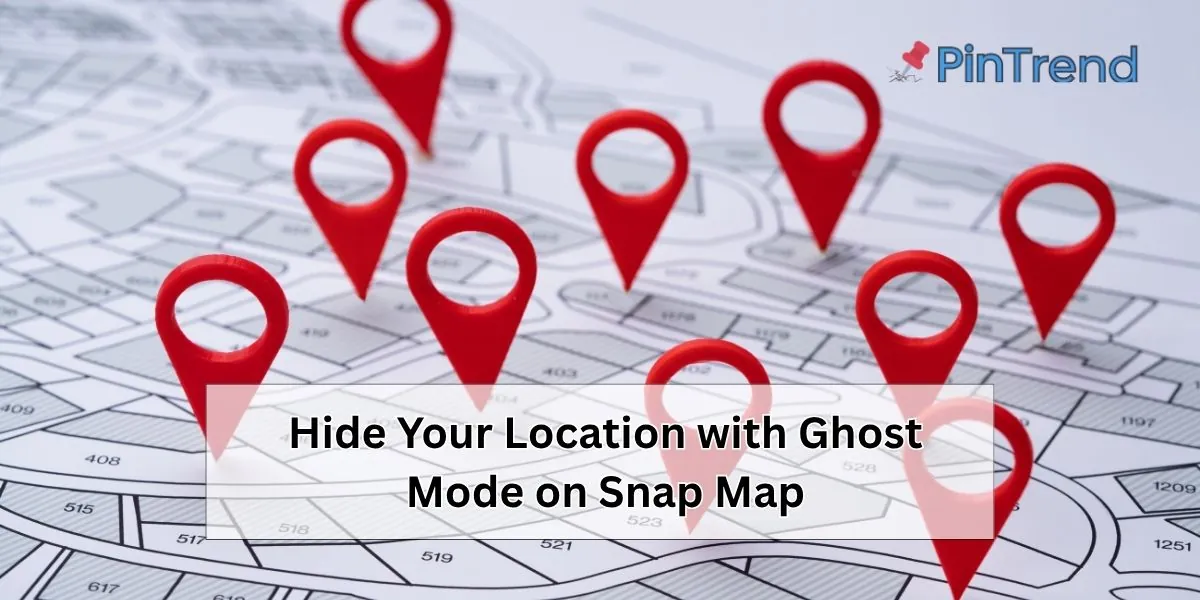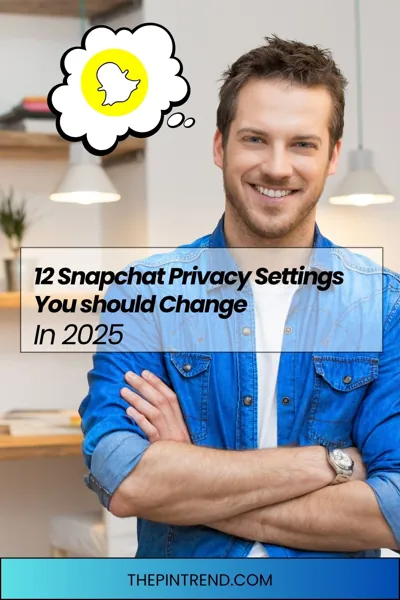Introduction
Curious how much Snapchat really knows about you in 2025? From your real-time location to facial data used in AI filters, the app collects far more than just Snaps. Every tap, lens, and message feeds into its vast AI personalization system — shaping what you see and how you’re seen online. With growing social media privacy concerns, it’s time to take control of your data.
In this complete guide, you’ll uncover 12 crucial Snapchat privacy settings to change right now to protect your identity, control who views your content, and stay invisible to unwanted eyes.
1. Why Snapchat Privacy Settings Matter More Than Ever
Snapchat isn’t just a camera app anymore — it’s an AI-powered social platform that tracks behavior, interactions, and preferences to deliver hyper-personalized ads and content.
Every time you send a Snap, open the app, or view a Spotlight video, Snapchat collects data to refine its AI recommendation system. Without reviewing your Snapchat data privacy options, your online identity protection is at risk.
Taking charge of your privacy settings helps you limit data collection, protect your digital footprint, and prevent unwanted exposure.

2. How Snapchat Collects and Uses Your Data for Ads and AI Personalization
Snapchat’s algorithm learns from your snaps, chats, and interactions. It uses behavioral targeting to serve tailored ads, powered by its AI recommendation system.
Your data usage fuels this personalization — including your contacts, viewing habits, and even time spent on specific Stories. While it improves user experience, it also builds detailed user profiles for advertisers.
To reduce tracking:
1. Turn off “Ad Preferences” in Settings.
2. Disable “Activity-Based Ads” and “Audience-Based Ads.”
3. Regularly clear your search history to reset recommendations.

3. The 2025 Snapchat Privacy Policy Updates You Should Know
Snapchat rolled out major privacy policy updates in 2025, emphasizing user data transparency and AI consent.
The app now clearly states how user data supports its AI features — such as the “My AI” chatbot, AR lenses, and content suggestions.
To stay informed:
1. Visit the Snapchat privacy policy 2025 section under “Legal.”
2. Review how personalized ads and location services operate.
3. Use Snapchat’s new “Privacy Center” for quick access to settings.
These changes show a shift toward social media privacy awareness, but the default settings still favor visibility — not privacy.

4. Common Privacy Mistakes Most Snapchat Users Still Make in 2025
Even with new tools, most users overlook critical digital safety steps:
1. Leaving location sharing on 24/7.
2. Accepting Quick Add friend requests from strangers.
3. Forgetting to review saved conversations.
These online privacy mistakes can expose personal data and even invite scams or impersonation. Awareness is your first defense against data misuse.
5. Control Who Can Contact or Add You on Snapchat
Limit Who Can Add You via Quick Add or Username Search
The Quick Add feature makes it easy for anyone with mutual connections to find you. Disable it under Settings → See Me in Quick Add to reduce connection privacy risks.
Manage Who Can See You in Search and by Phone Number
Under Privacy Controls → Contact Settings, turn off visibility by phone number and search name to stay hidden from unwanted contacts.
Stop Random Friend Requests and Spam Connections
Spam adds are rising in 2025 due to fake AI-driven accounts. Keep “Who Can Contact Me” limited to Friends Only to block unwanted adds and maintain social privacy.
6. Choose Who Can View Your Stories and Spotlight Snaps
Set Custom Story Viewers
Control your audience by tapping Story Settings → Custom to exclude specific viewers. This enhances private story settings and content sharing preferences.
Create Private Stories and Close Friend Lists
Private Stories allow you to share with a trusted group only. It’s ideal for content privacy and story sharing preferences.
Manage Spotlight Visibility
If you’re using Spotlight, review your public profile control to decide what appears publicly. This helps minimize social exposure.
7. Hide Your Location with Ghost Mode on Snap Map
How Snap Map Shares Your Location Automatically
By default, Snap Map updates your real-time position whenever you open the app — unless you enable Ghost Mode.
Enable Ghost Mode or Limit Location Sharing
Go to Settings → See My Location → Enable Ghost Mode. You can also limit sharing to Selected Friends Only to keep map visibility restricted.
Bonus Tip: Pause Location Sharing When Traveling
When on the go, toggle Ghost Mode temporarily. It’s a quick privacy boost for digital wellbeing and travel safety.

8. Manage What Snapchat Knows About You and Your Behavior
Turn Off Contact Syncing and Data Sharing
Disable Contact Syncing to prevent user profiling across apps. It’s under Settings → Privacy Controls → Sync Contacts.
Review Snapchat Ad Preferences
Visit Ads → Ad Preferences to manage personalized advertising options.
Stop AI Recommendations
Toggle off AI suggestions and behavioral targeting for better Snapchat AI privacy.
9. Secure Your Account Against Hackers and Unauthorized Logins
Enable Two-Factor Authentication (2FA)
Turn on 2FA via Settings → Two-Factor Authentication. It adds multi-factor authentication for secure logins.
Update Strong Passwords Regularly
Change passwords every 3–6 months to prevent data breaches or account takeovers.
Check and Remove Unrecognized Devices
Under Login History, remove suspicious devices for better account monitoring.
10. Keep Your Memories and Chats Completely Private
Save Snaps to Camera Roll Instead of Memories
If you’re concerned about cloud access, store Snaps in your Camera Roll — a more private storage option.
Hide or Lock Sensitive Memories
Use the My Eyes Only feature with a PIN to encrypt private snaps — perfect for secure storage and privacy vaults.
Enable Message Deletion After Viewing
Set chats to Delete After Viewing for better chat privacy and auto-delete protection.
11. Control Your Digital Footprint on Snapchat
Clear Search and Chat History
Regularly tap Settings → Clear Search History to maintain data hygiene.
Remove Saved Conversations or Old Snaps
Deleting old content reduces storage control risks and strengthens privacy maintenance.
Delete Snapchat Data and Cache
Under Account Actions → Clear Cache, clean up residual data to reduce data retention.
12. Fine-Tune App Permissions on Your Device
Check Camera, Microphone, and Location Access
Head to your phone’s App Permissions section to monitor hardware access.
Disable Permissions You Don’t Use
Turn off microphone or location access when unused to maintain data access limitation.
Manually Approve Tags, Mentions, and Comments
Enable Tag Approval to control social interaction and stop unwanted mentions.
Bonus: Download and Review Your Snapchat Data (Full Account Transparency)
Snapchat’s My Data tool lets you view everything the app has stored — from login records to Memories.
How to Request Your Data
Go to Accounts → My Data → Submit Request. You’ll get an email to download Snapchat data securely.
What Information Snapchat Collects
The file includes chat logs, login history, Snap Map data, and ad interests, giving you a complete privacy audit.
This transparency helps users meet GDPR compliance and regain user data visibility.
Final Tips for Maximum Snapchat Privacy and Security in 2025
Privacy Checklist Recap
1. Enable Ghost Mode
2. Turn off Quick Add
3. Set Stories to Custom
4. Use 2FA
5. Regularly clear data and permissions
Tools to Enhance Snapchat Security
For extra data protection, use privacy apps like Jumbo, Lockdown, or DuckDuckGo Privacy Browser to monitor digital footprints.
By reviewing your Snapchat privacy checklist every month, you’ll ensure your personal data stays safe — no matter how the app evolves.
In short: 2025 is the year to reclaim control over your Snapchat data.
Take 10 minutes to adjust these settings today — and enjoy the app without giving away your privacy.
Frequently Asked Questions
1. What are the Snapchat privacy settings?
Snapchat privacy settings let you control who can contact you, view your stories, see your location, and how your data is used for ads or AI personalization.
2. How do I know if my Snapchat is being monitored?
Check your account’s logged-in devices under Settings → Devices. If you see unknown logins or suspicious activity, change your password and enable 2FA immediately.
3. Can Snapchat see your private chats?
Snapchat’s servers can temporarily access messages for delivery or legal compliance, but chats are automatically deleted after viewing unless you or your friend save them.
4. What is SnapKidz?
SnapKidz was a child-friendly version of Snapchat for users under 13, but it has been discontinued and is no longer available.
5. Can people see my deleted snaps?
Once deleted, snaps are removed from the chat and Snapchat’s servers, though recipients may still have screenshots or saved copies before deletion.


